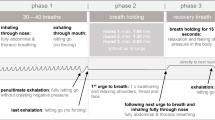Abstract
Stress Inventory-6, a 72-item self-report questionnaire designed to tap 18 factors of physical stress reactions, was subjected to factor analysis. The instrument was given to 474 students (254 females, 206 males, and 14 who failed to indicate their gender). The final factor solution identified 16 first-order and 4 second-order factors. The first-order solution replicated most of the factors identified in a previous study and defined factors in terms of organ system, muscle group, and simple content. In the second-order solution, Factors I, III, and IV include symptoms that are immediate and direct, appear to be related to arousal of the somatic and sympathetic nervous system, and are marked prominently by cardiorespiratory activity. In contrast, Factor II includes symptoms that are indirect and often delayed consequences of sustained arousal (Fatigue and Lack of Energy, Headaches, Backaches, etc.). A major distinction can be made between stress arousal Factors I and III. Factor III appears to be a simple “fight or flight” arousal pattern characterized by fairly direct manifestations of striated muscle tension as well as cardiorespiratory activity. In contrast, Factor I is a complex arousal pattern characterized by diffuse autonomic arousal, self-directed attention, and possibly low self-esteem. The results of this study draw into question the extent to which popular stress inventories tap a representative sample of stress symptoms. Clinical implications are discussed.
Similar content being viewed by others
References
Barber, M. (1982).The effects of life change, personality, and cognitive stress on health status. Unpublished master's thesis, Roosevelt University.
Cohen, S. (1980). Aftereffects of stress on human performance and social behavior: A review of research and theory.Psychological Bulletin, 88 82–108.
Curtis, J. W. (1984).Motivation to continue meditating and the ability to sustain nonanalytic attention. Unpublished master's thesis, Roosevelt University.
Deboe, J. (1981).Social support and stress. Unpublished master's thesis, Roosevelt University.
Doetzkies, B. P. (1984).Cognitive stress, life change events, and self-reported physical symptomatology. Unpublished master's thesis, Roosevelt University.
Fenz, W. D., & Epstein, S. (1965). Manifest anxiety: Unifactorial or multifactorial composition.Perceptual and Motor Skills, 20 773–780.
Nie, N. H., Hull, C. H., Jenkins, J. G., Steinbrenner, K., & Bent, D. A. (1975).Statistical package for the social sciences (2nd ed.). New York: McGraw-Hill.
Schwartz, G. E., Davidson, R. J., & Goleman, D. J. (1978). Patterning of cognitive and somatic processes in the self-regulation of anxiety: Effects of meditation versus exercise.Psychosomatic Medicine, 40 321–328.
Selye, H. (1976).Stress in health and disease. Reading, Massachusetts: Butterworths.
Smith, J. C., & Seidel, J. M. (1982). The factor structure of self-reported physical stress reactions.Biofeedback and Self-Regulation, 7 35–47.
Smith, J. C., & Sheridan, M. (1983). Type A (coronary-prone) behavior and self-reported physical and cognitive reactions to actual life stressors.Perceptual and Motor Skills, 56 545–546.
Author information
Authors and Affiliations
Additional information
The authors wish to thank Patrick Corrigan for his considerable statistical assistance.
Rights and permissions
About this article
Cite this article
Smith, J.C., Siebert, J.R. Self-reported physical stress reactions: First- and second-order factors. Biofeedback and Self-Regulation 9, 215–227 (1984). https://doi.org/10.1007/BF00998836
Issue Date:
DOI: https://doi.org/10.1007/BF00998836




